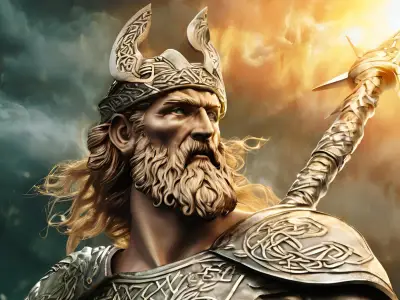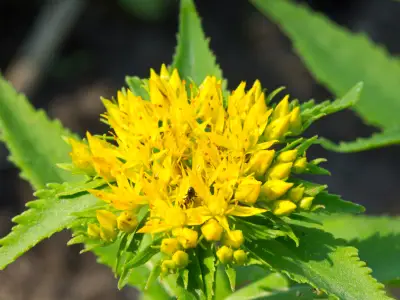If you were to paint a mental image of a historical warrior tribe, you would be forgiven for imagining the clan as predominantly male soldiers. While most warrior tribes were arguably androcentric, the Japanese samurai were slightly different. Unlike in other medieval societies, becoming a supreme warrior in premodern Japan was not solely reliant on being born male. Instead, your ability to become a supreme warrior was more down to social class, expertise in combat, strategy prowess and indomitable spirit.
In this blog, we break down women’s role as warriors and their position as samurai throughout the history of Japan.

Jump to:
Women as warriors in Japan have quite a long and illustrious history. Centuries before the rise of the samurai ruling class, the Onna-Musha, or woman warrior, was acknowledged as being every bit as strong, fearless, and deadly as their male counterparts.
While not nearly as famous as some of their famous male equivalents and not exhibiting nearly as many privileges at the time, the Onna-Musha, which consisted of around 5% of the samurai, were skilled and well-known warriors in historical Japan. Their expertise on the battlefield was widely known, and some female Japanese samurais played an important role in shaping the society of medieval Japan.
The idea of female warriors in premodern Japan has garnered more attention over recent years. The image of a woman sporting the attire of a samurai warrior is becoming increasingly prevalent in the cultural zeitgeist. Female samurai frequently appear in modern film, anime, video games, and manga. However, the question still remains: were these depictions accurate, and just how prevalent were female samurai?
When it comes to assessing women’s role as warriors in premodern Japan, there are many nuances and factors to consider. Women's roles could not be entirely encapsulated in one specific domain and, depending on the class the woman was born into, would greatly impact her privileges and status. Upon further analysis, it becomes all the more evident that Japanese women were not treated the same as men, and they were not exactly the pinnacle of the women’s liberation movement. Regardless, women in Medieval Era Japan were sometimes allowed liberties that women from other cultures were not afforded.
Recommended for you!
Best SellersWere There Female Samurai?
In short, yes, there were female samurai. However, they may not have been as you imagined. Firstly, not all female warriors in feudal Japan were samurai, and not all female samurai fought like their male counterparts.
Throughout the history of premodern Japan, the samurai warrior class would come to dominate the country in all things military despite the fact they were not the only types of warriors in the country. Some noticeable examples of other soldier groups include the Ashigaru, who were lower-class infantry foot soldiers, Sōhei, armed groups of Buddhist warrior monks and, of course, Ninjas, who are potentially the most well-known Japanese warriors aside from the samurai. While most of these warrior clans were male, there were some noticeable records of female soldiers in their ranks.
Not all female warriors were samurai. After all, samurai is considered a masculine word, and the role of women in samurai families differed from family to family. Regardless, there have been female samurai throughout the history of Japan.
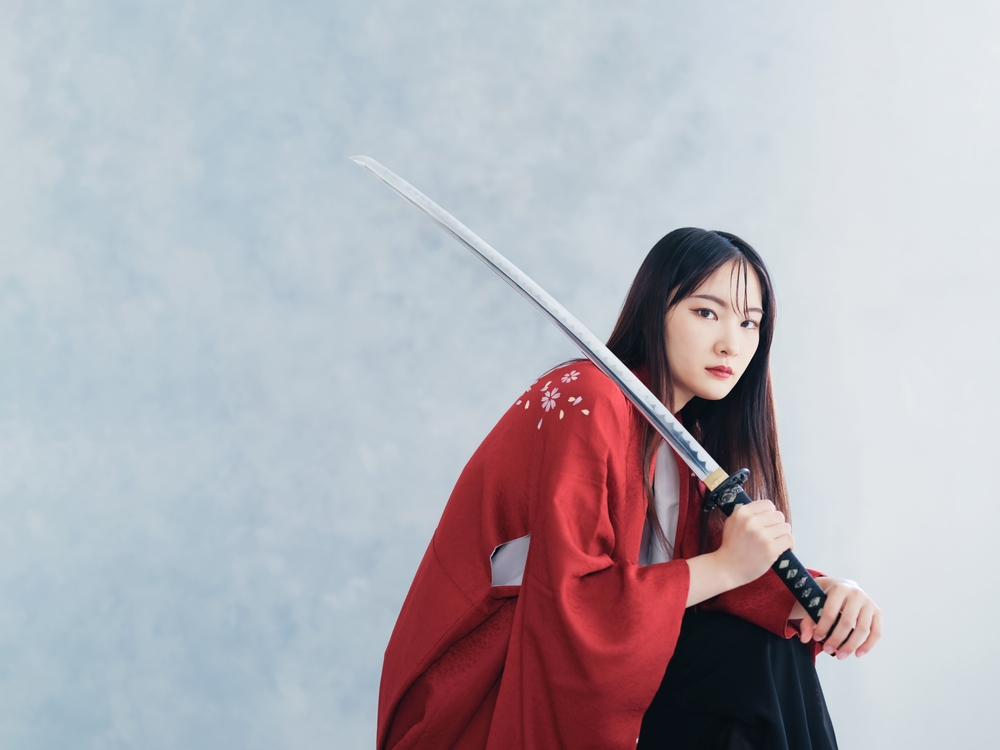
What Were Female Warriors Called?
In modern times, the term female samurai refers more broadly to all female warriors in premodern Japan. While this is the simplest approach, it is not necessarily correct. Female warriors are also called Onna-Bugeisha, Onna-Musha and, in some cases, Kunoichi. While these terms are often used interchangeably, there are some differences in their meanings and historical context. As such, we break down the exact meaning of different warrior names.
Female Samurai
Although the term female samurai refers to all types of female warriors, technically speaking, a female samurai is a woman who was either born or married into a samurai family. Some female members of samurai families participated in combat strategy and martial arts, but this was by no means universal. Many women in samurai families adopted traditional feminine roles in medieval societies, including domestic duties such as managing the household and raising children.
On some rare occasions, when there were no clear male heirs, females would be trained like a male born into a samurai family would. Women being trained as samurai became less and less common as the feudal period progressed. However, women becoming samurai warriors were not completely unheard of.
Onna-Bugeisha
The term Onna-Bugeisha referred to women warriors who trained in combat and sometimes participated in battle. The most noticeable difference between the Onna-Bugeisha and Onna-Musha is that the Onna-Bugeisha trained to defend their family and property. Some of their most noticeable features include wielding the naginata, a pole weapon that was effective for both slicing and stabbing motions, ideal for women to use for maintaining distance from more physically imposing male opponents.
Onna-Musha
Onna-Musha literally translates to ‘female warrior’, but the term is more specifically used to describe female warriors who participated in battle. This term is not used as frequently as Onna-Bugeisha because it is less historically specific and can be used more generally to denote any female warrior in Japan, much like the term female samurai.
Kunoichi
The Kunoichi is slightly different from the terms mentioned above because it is much more specific. The term Kunoichi refers to a female ninja trained in the Japanese art of ninjutsu. Their expertise included stealth, espionage, and guerilla warfare. The term originates from a unique stroke order of the kanji for women.
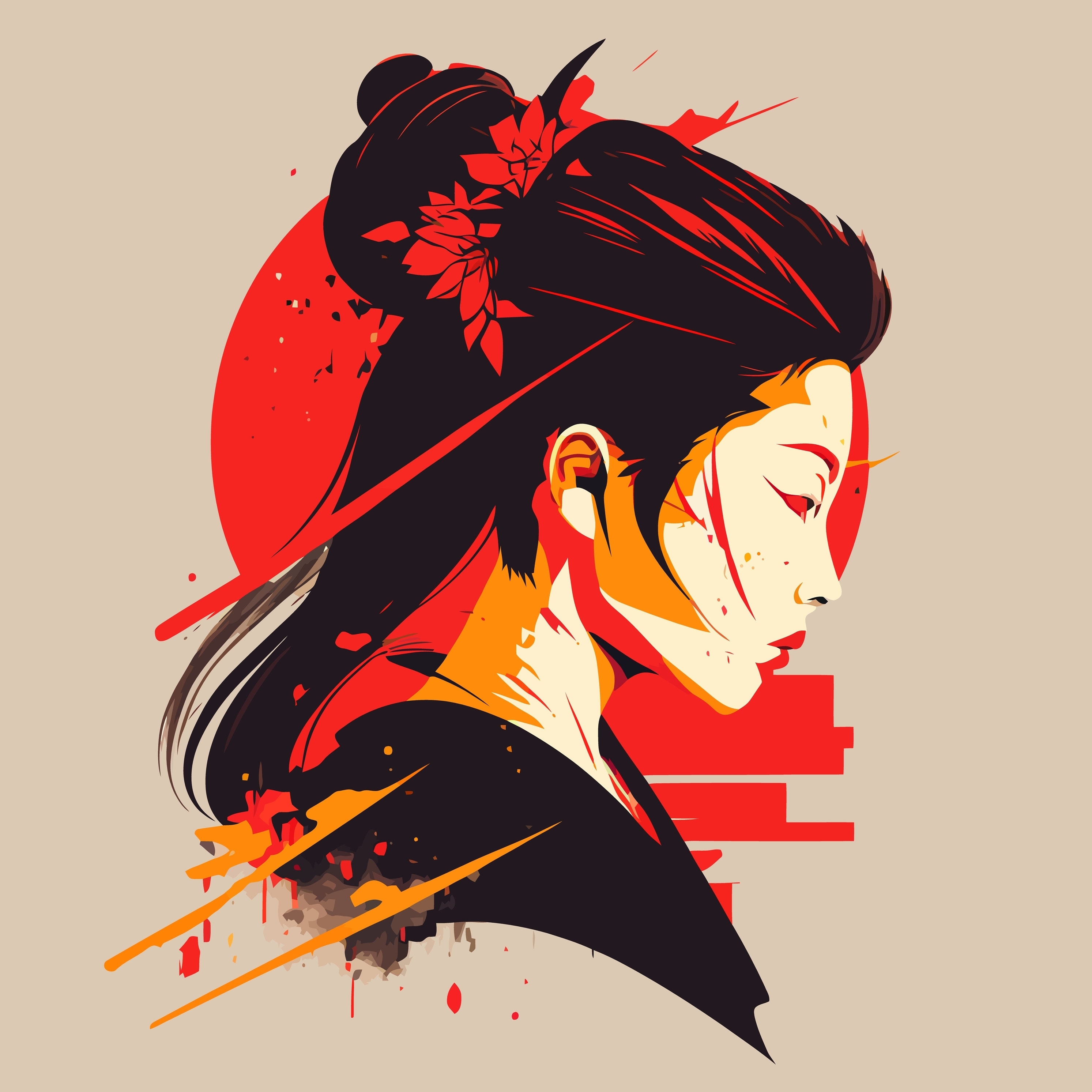
History of Female Samurai
As with any historical documentation, pinpointing exact histories is tricky and sometimes open to interpretation. Regardless, there are numerous records of female Japanese warriors dating back centuries.
Origins- Early Japan
While reports were scattered, female samurai can be traced back to early Japan. Many historians point to Empress Jingū (169-269) as the first female Japanese warrior.
Following the death of her husband, Emperor Chūai, Jingū took and personally led an invasion of Silla, which is a region known today as Korea. She was said to be a fearsome warrior who defied every type of social norm of the time. Furthermore, she was said to have been pregnant during some of her most famous victories, and she did not let her pregnancy get in the way of her imperial duties.
Legend has it that she led successful expeditions without shedding a drop of blood, and she ruled over Japan for 70 years until the age of 100. In 1881, she became immortalised as the first woman to feature on a Japanese banknote.
The First Female Samurai- The Genpei War
While Empress Jingū is often credited as the first female warrior of Japan, the first appearance of a female samurai is usually credited to Tomoe Gozen's appearance during the Genpei War (1180-1185). The Genpei War was a time of great upheaval in Japan as two powerful clans, Taira and Minamoto, battled for control of the country. Tomoe Gozen took on a pivotal role in the war and was one of the main reasons the Minamoto clan emerged victorious.
The Edo Period
The advent of the Edo period at the beginning of the 17th century saw a huge shift in the status of women in Japan. Although women continued to fight in battles, their status was greatly diminished.
During the Edo period, the female samurai were often responsible for defending their homes and families in the absence of their husbands. Still, in keeping with samurai practices, many female samurais of the time learned how to handle a sword and were trained in combat strategy. In the event that enemies overran their castle, they were expected to be proficient enough in the art of combat and samurai teachings to either fend off the oncoming enemy or, at the very least, die sword in hand.
The Meiji Restoration
The Meiji Restoration (1868-1912) was a time of great change in Japan. The period saw an end to the samurai ruling class and the rise of modern Japan. During this time, many Onna-Bugeisha became involved in the movement to overthrow the Tokugawa shogunate.
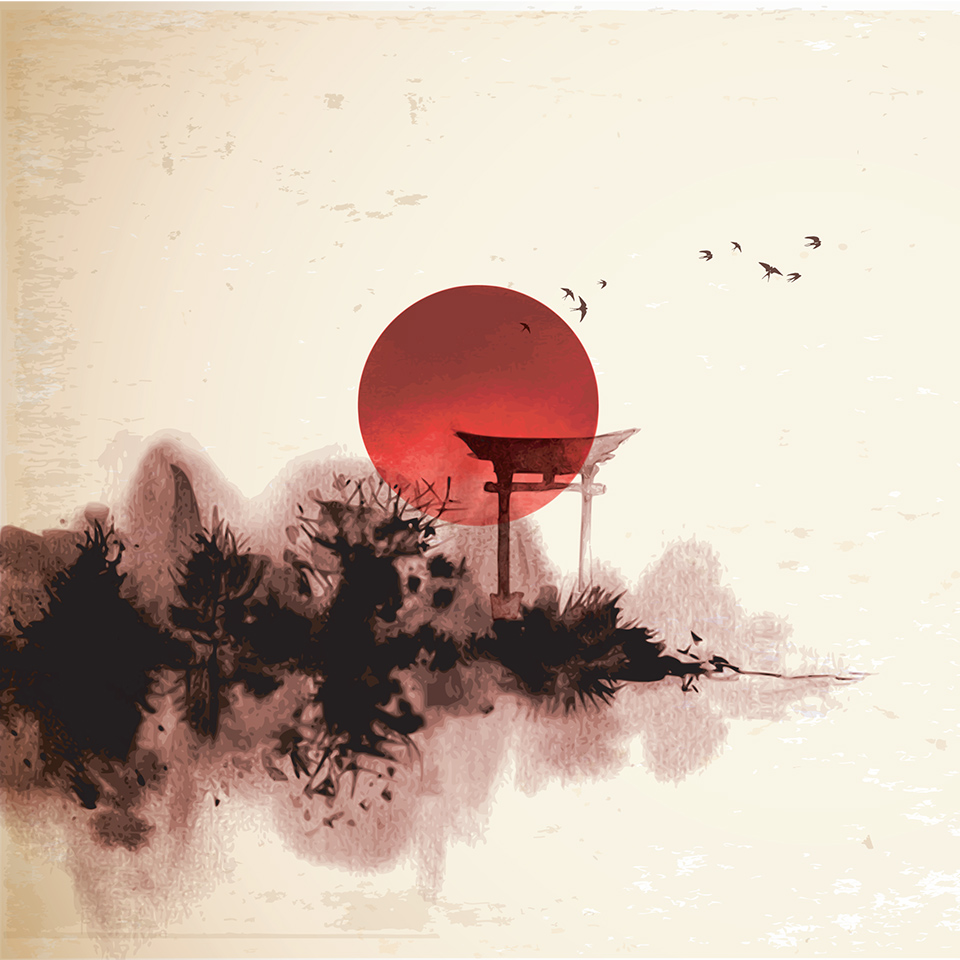
Famous Female Samurai
History is littered with tales of famous samurai warriors, and some of the most famous are female.
Tomoe Gozen
Arguably, the most famous female samurai, Tomoe Gozen, was also credited as the first notable woman samurai. As previously alluded to, she was well renowned for her martial prowess and strategic acumen. Gozen’s battle prowess was said to be so extraordinary that she could unhorse a foe with a single strike. Her presence on the frontlines defied societal norms of the time, further illustrating her unwavering courage and exceptional bravery.
While large parts of her life were relatively unknown, her most noticeable contribution to Japanese history came via her involvement in the Genpei War. She served under Minamoto no Yoshinaka, and she commanded 300 samurai against 2,000 warriors of the rival Taira clan. While this was not a victory for her side, the battle showcased her excellent combat skills and battle prowess before she was forced to flee.
Arguably her most noticeable battle moment came during the Battle of Awazu in 1184. During the battle, she beheaded Honda no Morishige of Musashi and presented his head to her master, Yoshinaka.
Nakano Takeko
Nakano Takeko has to be in the conversation when discussing the famous female samurai.
Nakano Takeko was a distinguished female samurai from the Aizu domain during the 19th century and was a paragon of martial skill and steadfast dedication. From a young age, she was adept in martial arts and played a critical role in the Boshin War.
Leading a contingent of female warriors, Takeko demonstrated exceptional combat abilities at the Battle of Aizu in 1868. Displaying remarkable courage, she chose not to surrender even in the face of certain death. In her final moments, she requested that her sister decapitate her to avoid desecration by the enemy. Her enduring legacy is marked by her contributions to martial arts and her strict adherence to the Bushido, or samurai code.
Hōjō Masako
Hojo Masako is a formidable figure in feudal Japan. Her role in the history of female samurai differs slightly from that of some of the other famous female samurai. Instead of being notable for her battle prowess, she became a samurai to take note of due to her exceptional political acumen.
The wife of the first shōgun of the Kamakura period (1185-1333), Hōjō Masako was the first Onna-Bugeisha to be a prominent figure in Japanese politics. Following her husband Minamoto no Yoritomo’s death, Masako became a Buddhist nun (a traditional fate of samurai widows) but still resumed her political duties. She assumed a central role in the political landscape and became an effective political leader in her own right. Masako skillfully managed alliances and intrigues, ensuring the stability of the shogunate. Her strategic brilliance earned her the moniker Nun Shogun.
Yodo-Dono
Yodo-Dono, formally known as Lady Chacha, was a prominent female figure in Japanese history during the turbulent Sengoku period. The daughter of the powerful daimyo (feudal lord) Oichi and niece of the warlord Oba Nobunaga, the first great unifier of Japan, she is perhaps best known through her connection to two other prominent figures in Japanese history. She was the concubine and wife of the second great unifier of Japan, Toyotomi Hideyoshi, as well as the mother to his heir, Toyotomi Hideyori.
Despite her strong connections to other famous samurais, she was a powerful samurai in her own right. After her husband's death, Yodo-Dono displayed political acumen by navigating the complex political landscape, marrying Tokugawa Ieyasu to secure her son’s position as heir.
However, the tides of fortune turned, leading to her involvement in the Winter and Summer Sieges of Osaka Castle. During the siege, Yodo-dono and Hideyori made their last stand against Ieyasu's forces. The siege ended in their defeat, and both Yodo-dono and her son were believed to have died in 1615 during the conflict.
Hangaku Gozen
Hangaku Gozen is a revered female samurai from the Kamakura period. She is famed for her exceptional combat skills, especially her archery abilities.
In 1274, she fought alongside her husband, Satō Tsugunobu, in defence of their fortress against the invading Mongol forces. Arguably her most famous moment came during the Battle of Bun’ei, where she displayed immense courage on the front lines. She engaged in a furious battle with a Mongol officer, which saw her ultimately sacrifice herself to protect her family and honour.
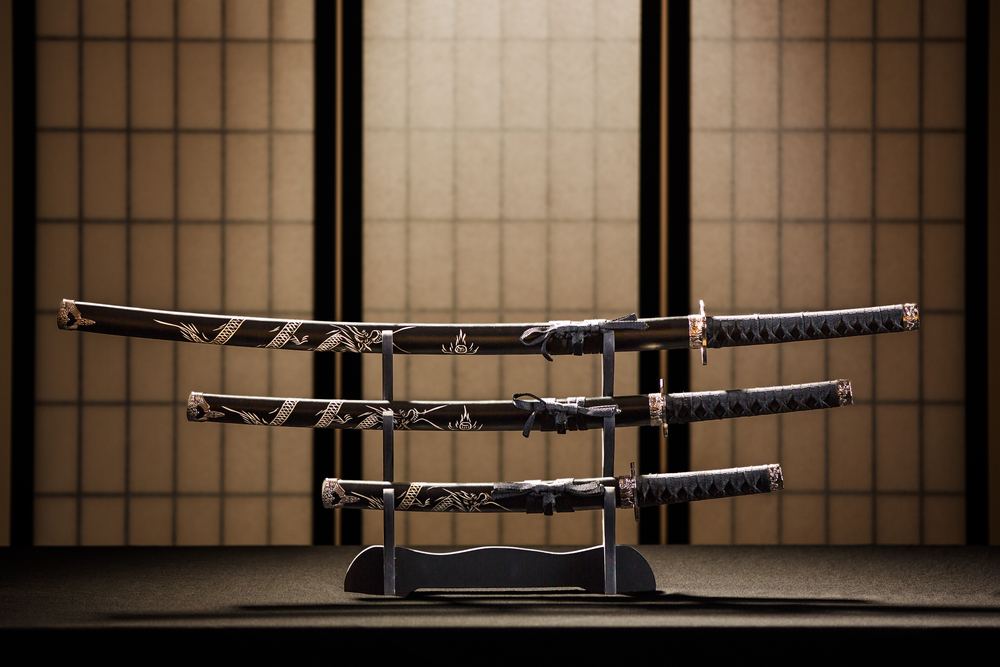
Female Samurai Weapons
While it may seem obvious that the katana is the preferred weapon of choice for male samurai, there is little doubt that the naginata is the weapon most associated with the Onna-Bugeisha. While some female samurai did use weapons such as the Kaiken, a small dagger, Yari, a spear, and a traditional bow and arrow, the naginata proved most popular for female warriors.
The naginata is a pole weapon with a curved blade on the end, somewhat similar to a European halberd. It was particularly effective for slicing through opponents at a distance, which was advantageous for women who might be physically overpowered in close combat. The naginata enabled female samurai to use their battle prowess to their advantage and overthrow opponents far bigger in size and power than themselves.
Learn More About The Japanese Samurai from the Centre of Excellence
If learning about these legendary female warriors has been of interest to you, then why not learn more about the female and male samurai from the Centre of Excellence? Study Japan’s history with our accredited Introduction to Japanese History course for only £29 (originally £127). What are you waiting for? Contact us today!












